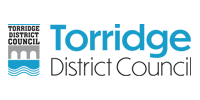Case Study

Upgrading a three bed semi-detached house in a conservation area
When Alastair, Lizzie and their two daughters moved into their home in 2019 the property had an energy efficiency rating of D. With the potential to improve this rating to C or above, they set about making improvements to the property that would improve its energy efficiency, reduce its carbon footprint, reduce damp and improve indoor air quality.
Loft Insulation
Alastair inspected the roof space as soon as he moved in and found there were cheap and easy improvements he could carry out himself.
“I boarded out the roof and included legs underneath, giving me 400mm of space for insulation. I made sure we had sufficient ventilation and air flow to avoid condensation on the inside of the roof felt by adding vents in walls – you can also add them in between the layers of roof felt. You can easily insulate your loft hatch too. Of course, it can be quite disruptive as families like ours like to store a lot of junk in their loft but it’s a good opportunity to have a clear out!”
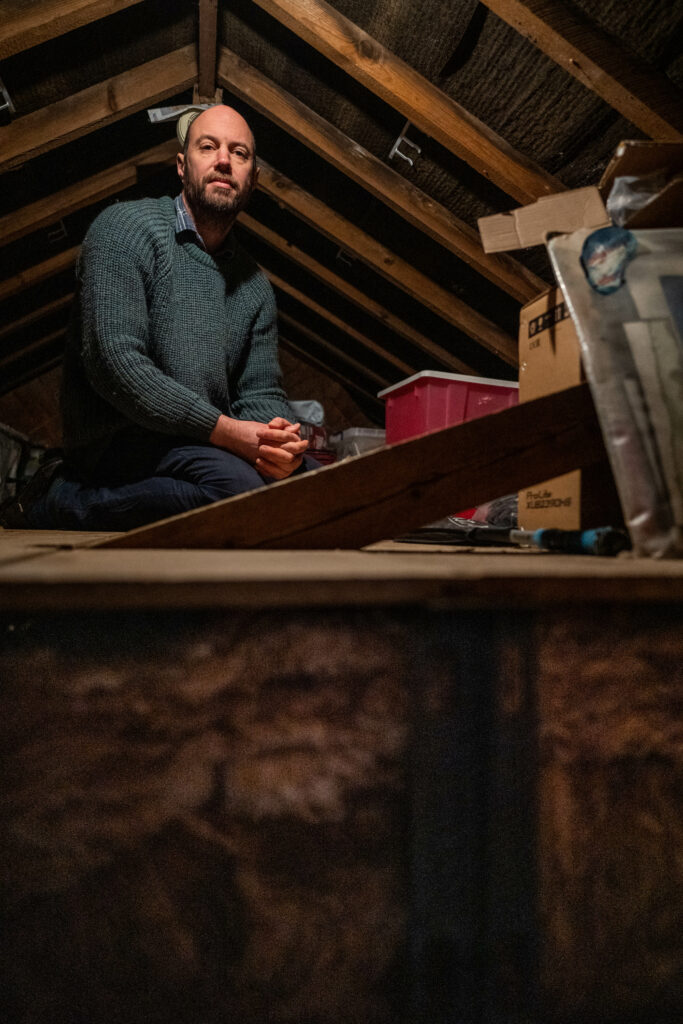
Rebuilding the extension
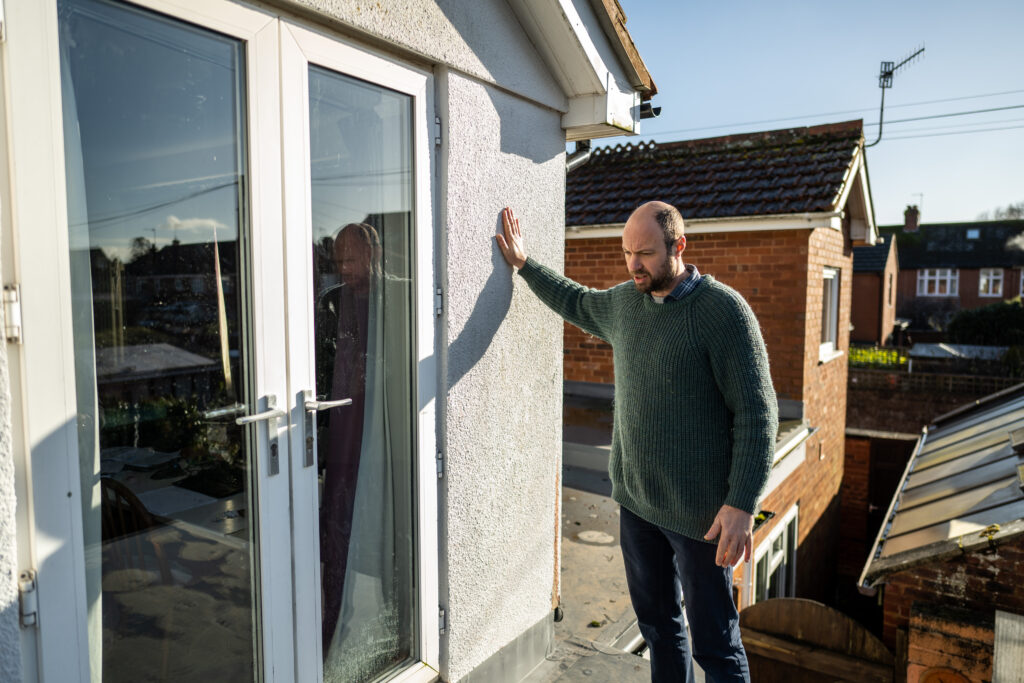
Alastair’s house used to have an extension at the back which had minimal insulation so was expensive to heat and was very damp.
When they had the money to redo the extension, the family took the opportunity to massively increase the insulation in the roof and walls using wood fibre insulation. Natural materials, like wood fibre, have a higher embodied carbon rating and are often more ‘breathable’, allowing moisture to move through them, reducing the risk of mould.
They also replaced the doors with new, double glazed units.
Solar PV
Alastair installed a 2.5kW Solar PV system which helps to reduce the amount of electricity they have to buy.
Any electricity they don’t use is sold back to their energy supplier.
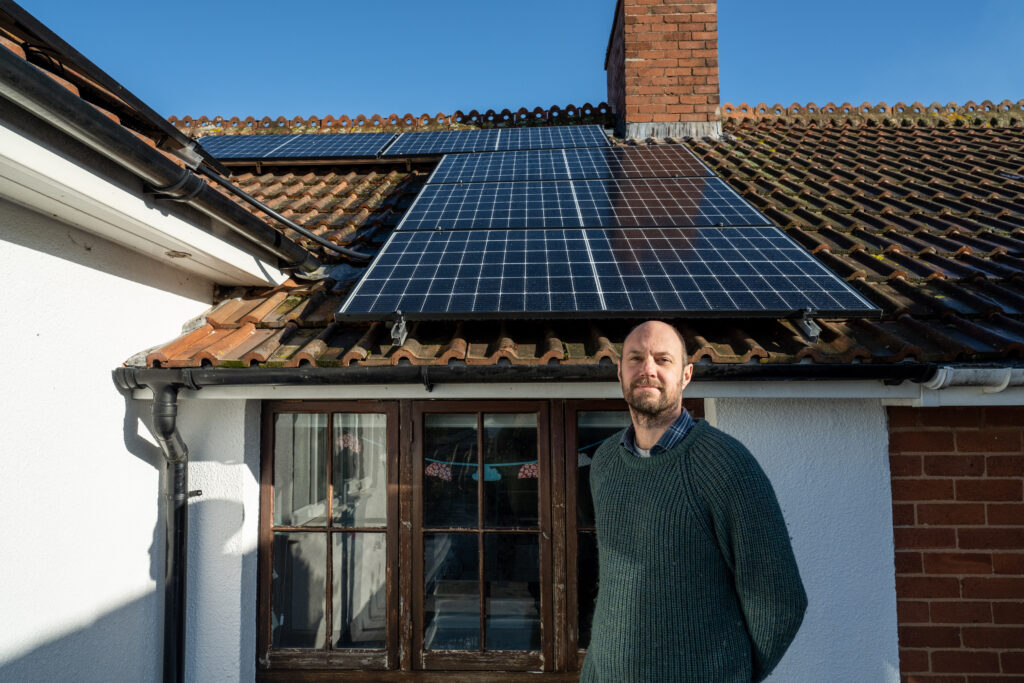
Future Proofing – Installing a Smart Hot Water Tank
While works were underway to rebuild their extension, the family decided to install a Smart Hot Water Tank alongside their existing combi boiler. This included a PV diverter which converts any excess electricity from the solar panels into hot water.
“The smart hot water tank supplies a platform for future improvements such as installing an air source eat pump. We wanted to put the tank in while we had the opportunity, to save us time and expense in the future.”
When the heat pump is installed, the PV diverter will allow the electricity from the Solar PV to able to contribute to the running of the air source heat pump as well.
Alastair has also made sure that whenever a radiator is replaced in the house, the replacement radiator is as large as possible, ready for an air source heat pump. Heat pumps are more efficient than gas boilers at lower temperatures so your radiators need to have a larger surface area to provide the equivalent heat output.
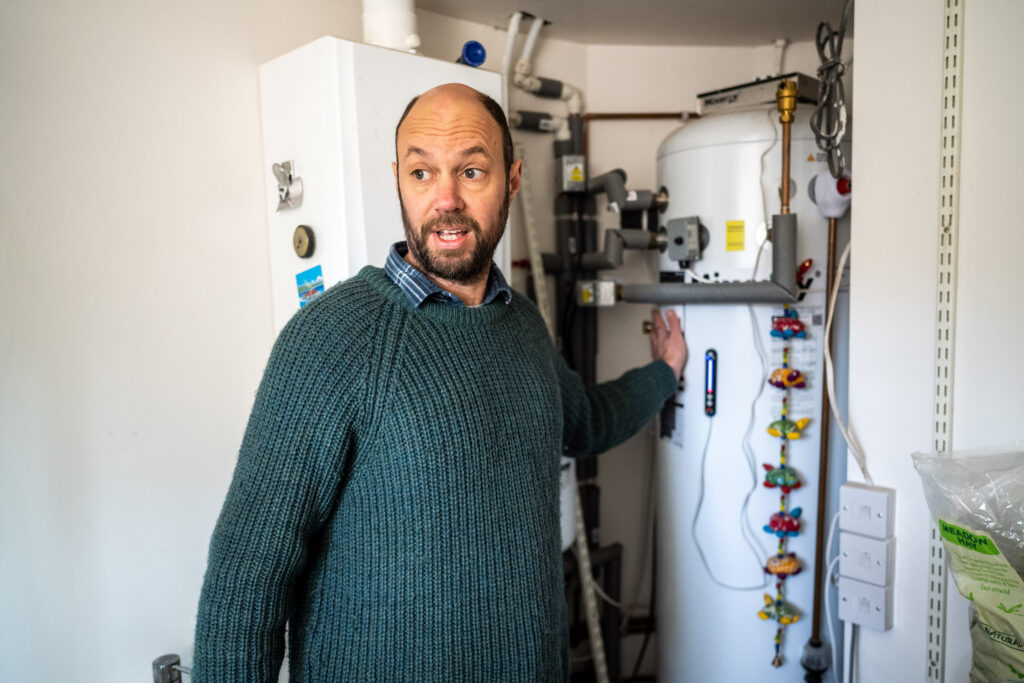
New Windows
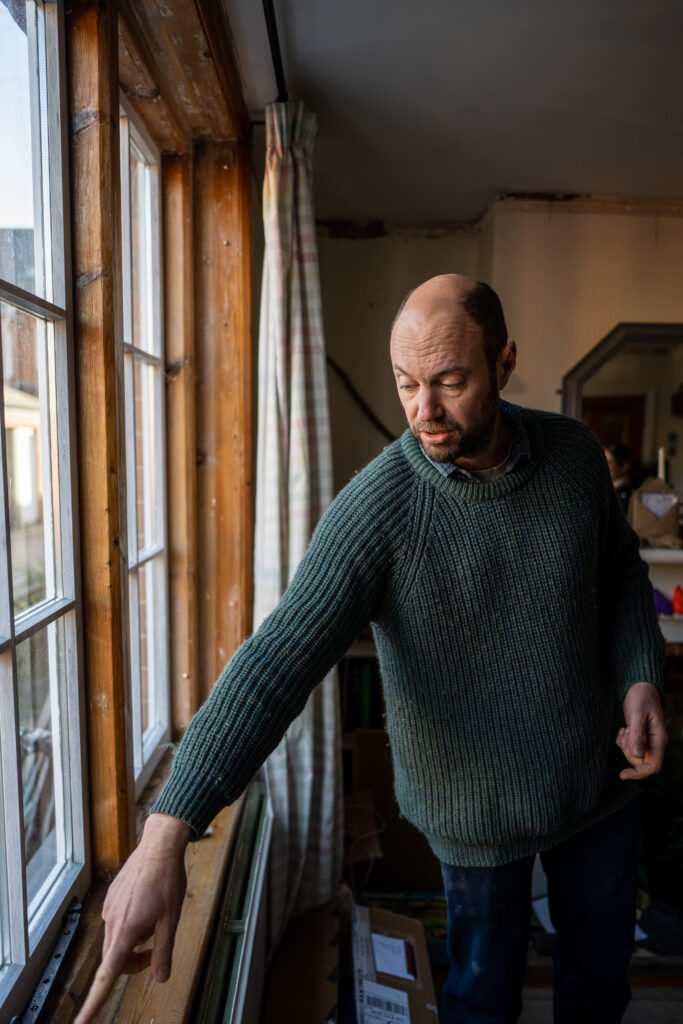
The family decided to replace the windows at the front of the house with custom made wooden double glazed units to improve the thermal properties of the windows.
Being in a Conservation Area meant that any improvements to the windows had to be in keeping with the rest of the house.
“To keep costs down I had new wooden windows made that could fit into the existing wooden frames. We used wood, rather an Aluminium or UPVC, because it offered greater insulative properties and a higher amount of embodied carbon.”
Costs were reduced further by using double glazed units with internal divisions and wooden bars added externally, rather than six individual panes. Embedded draft excluders were also added making the finished product very effective.
Engaging a Retrofit Coordinator
At this point, Alastair decided to engage one of their local Community Energy Group’s Retrofit Coordinators to help the family make a staged plan for further improvements.
“We cannot do it all at once as we don’t have the money, so we are having to stage these upgrades. We now have a Home Energy Plan, which sets out the measures to be done to achieve our goal and in what order to do them.”
“We are fully committed to trying to reduce our carbon footprint. Of course, there are cost savings to be generated and that is a key consideration but our priority as a family is to get our carbon footprint down.”
One of the next things the family plan to undertake is to install insulation on the exterior walls of the property and internal wall wood fibre insulation to those walls that face their neighbour’s property, especially the walls without cavities which have very poor thermal qualities.






